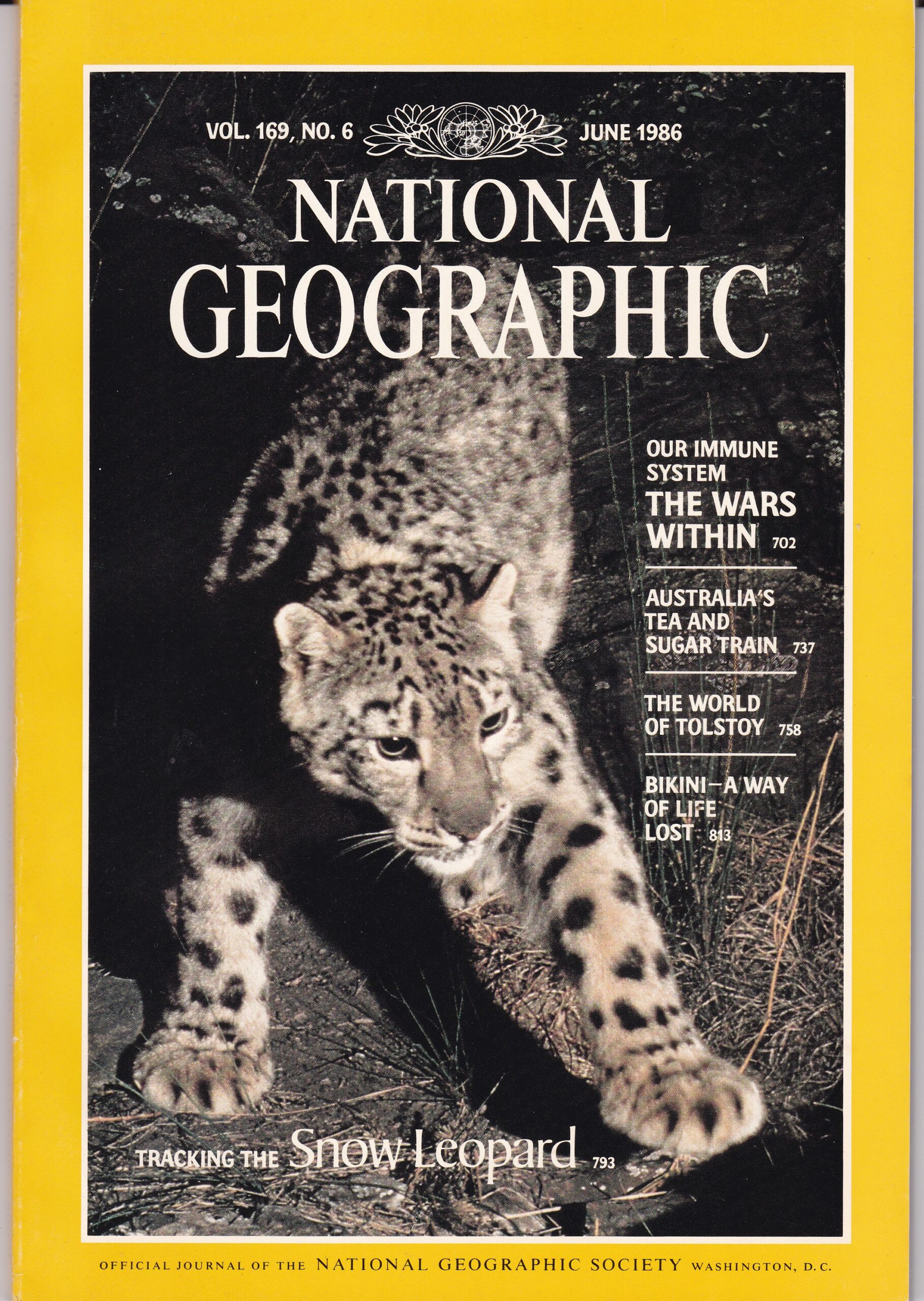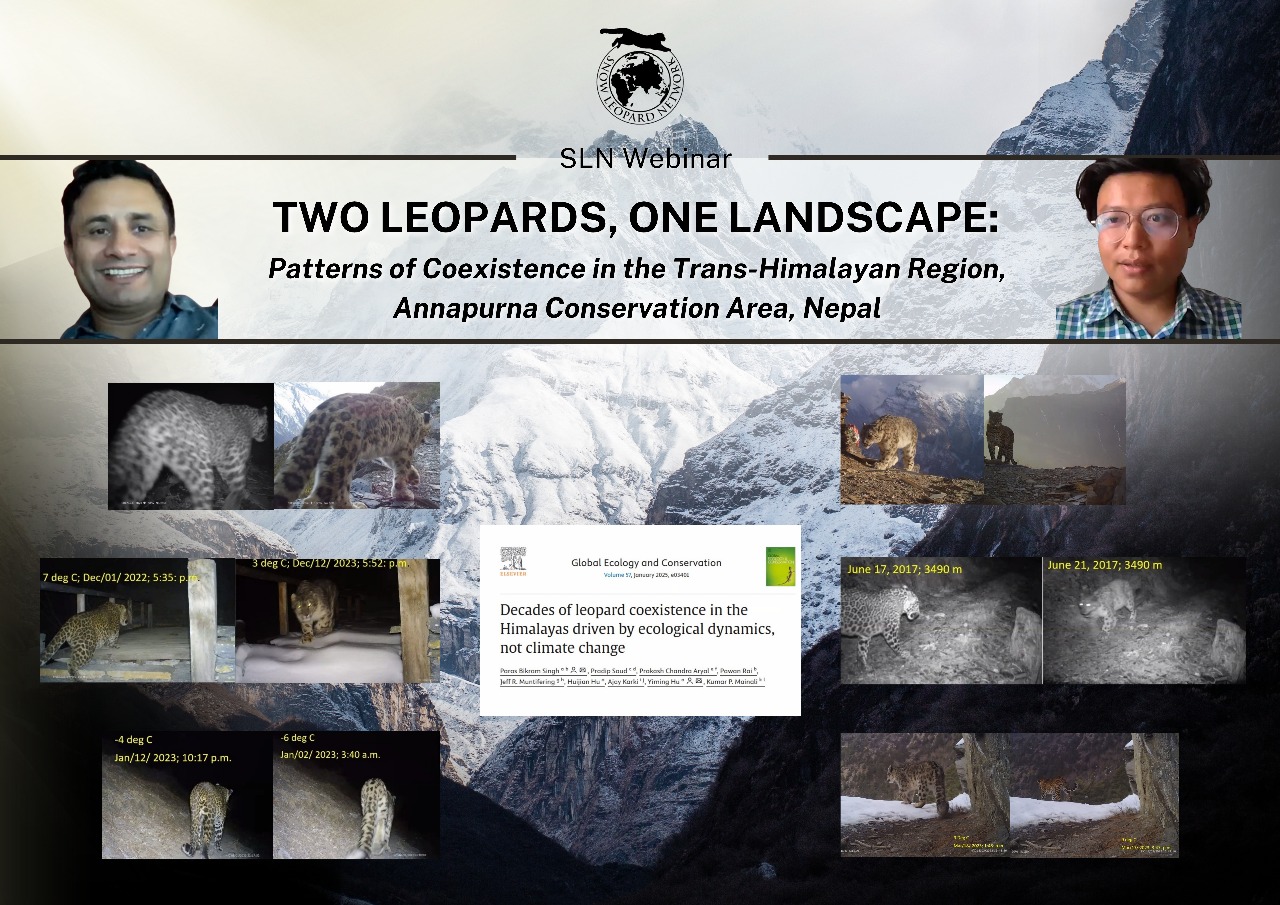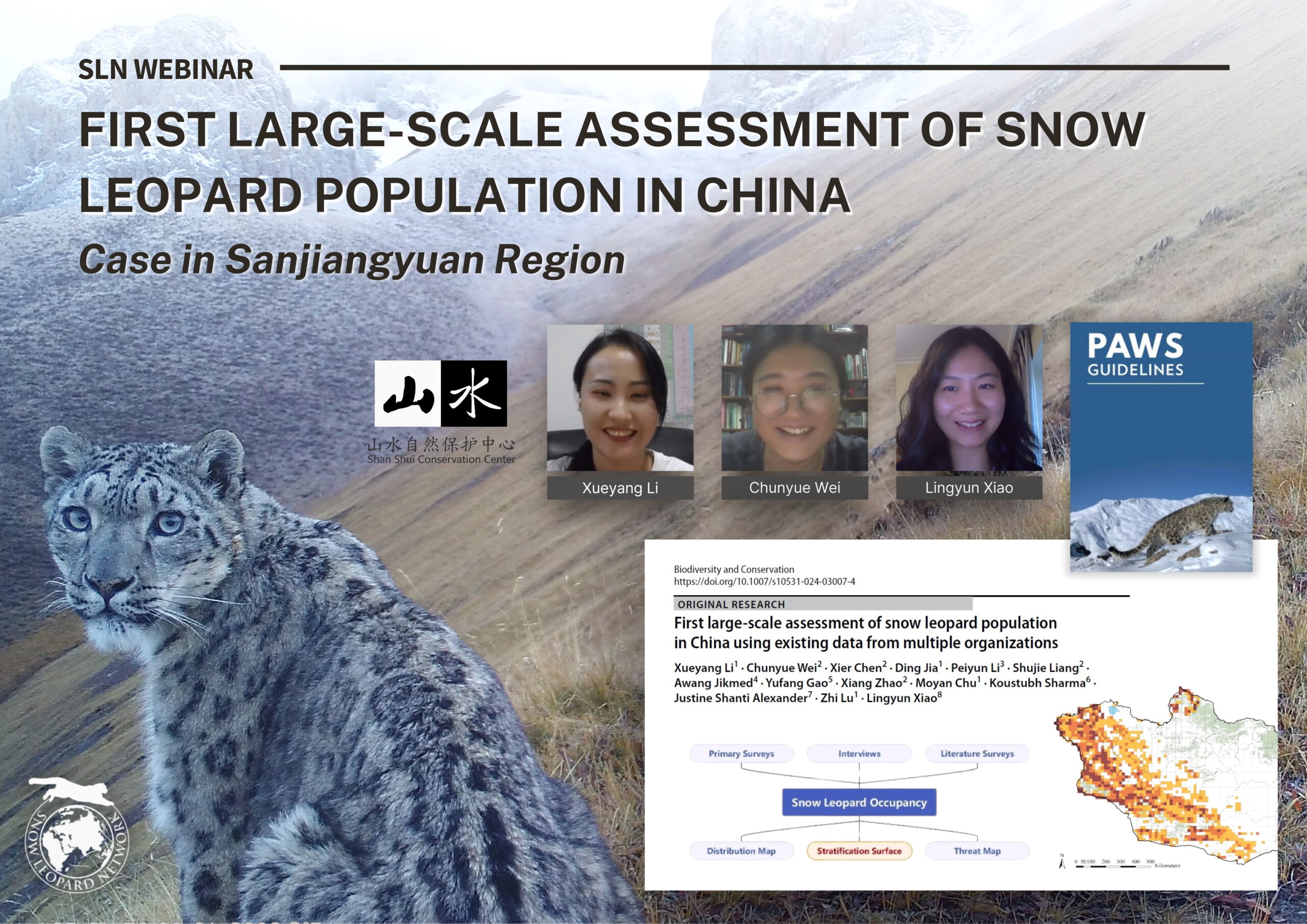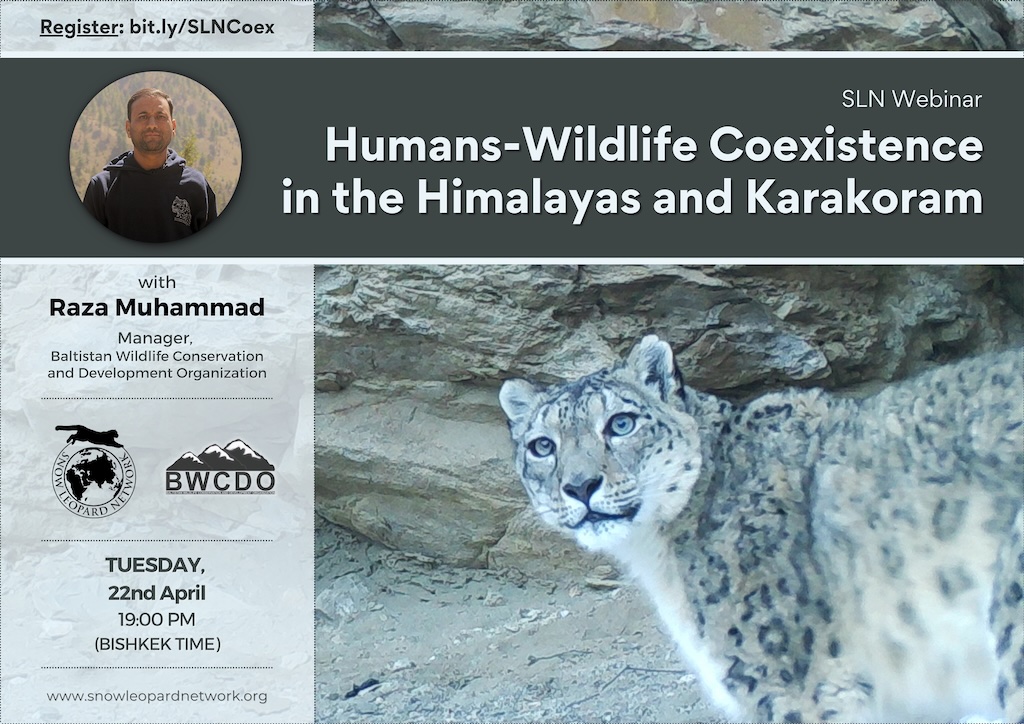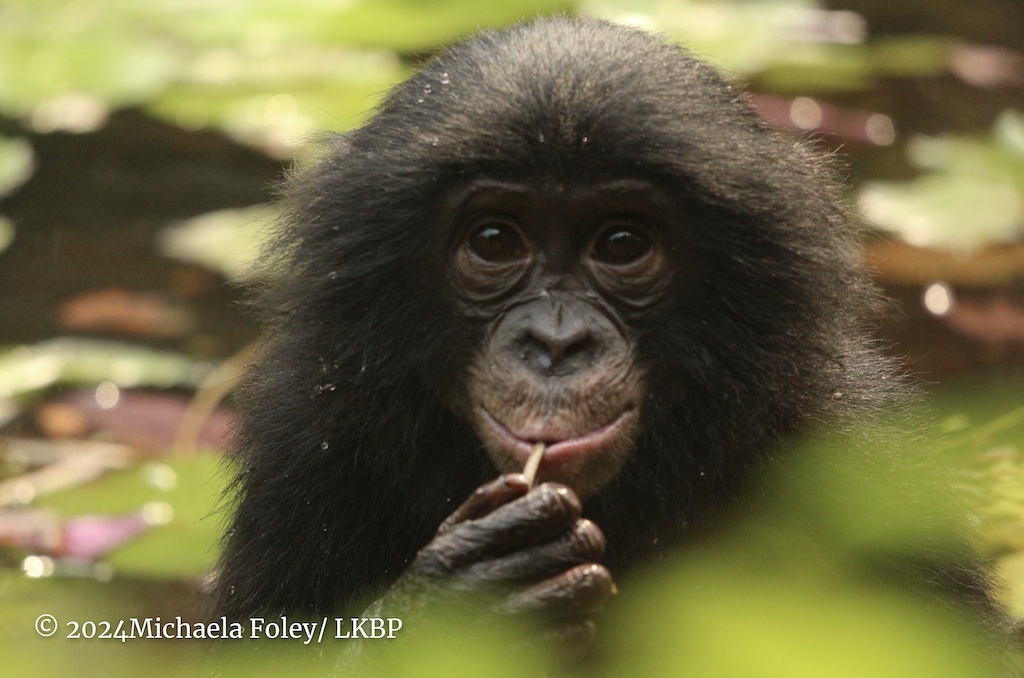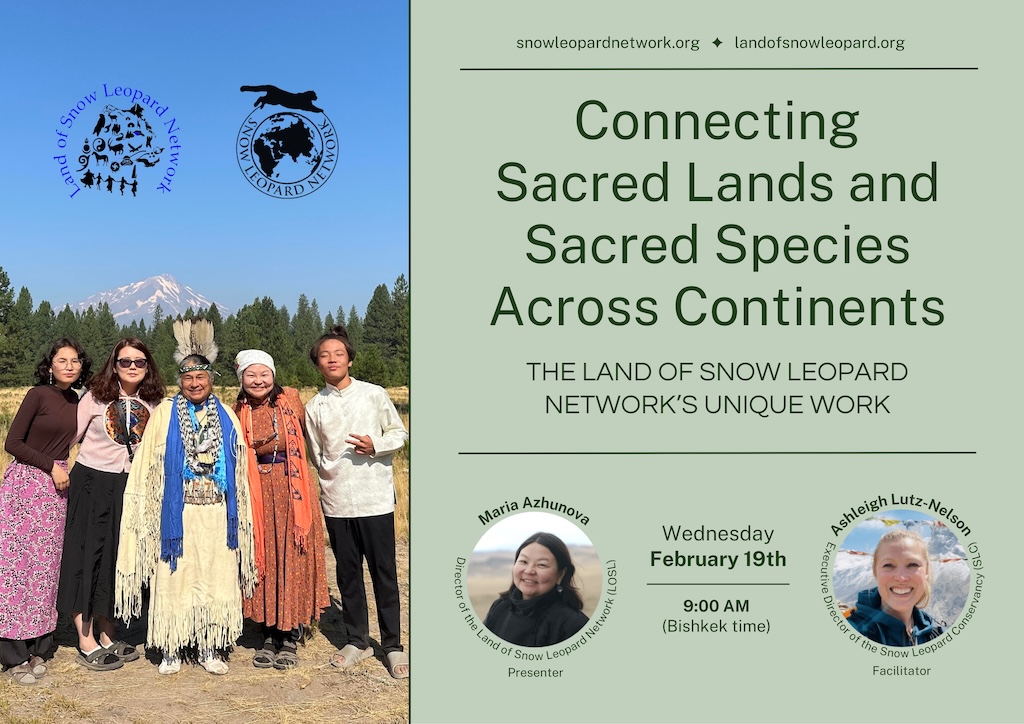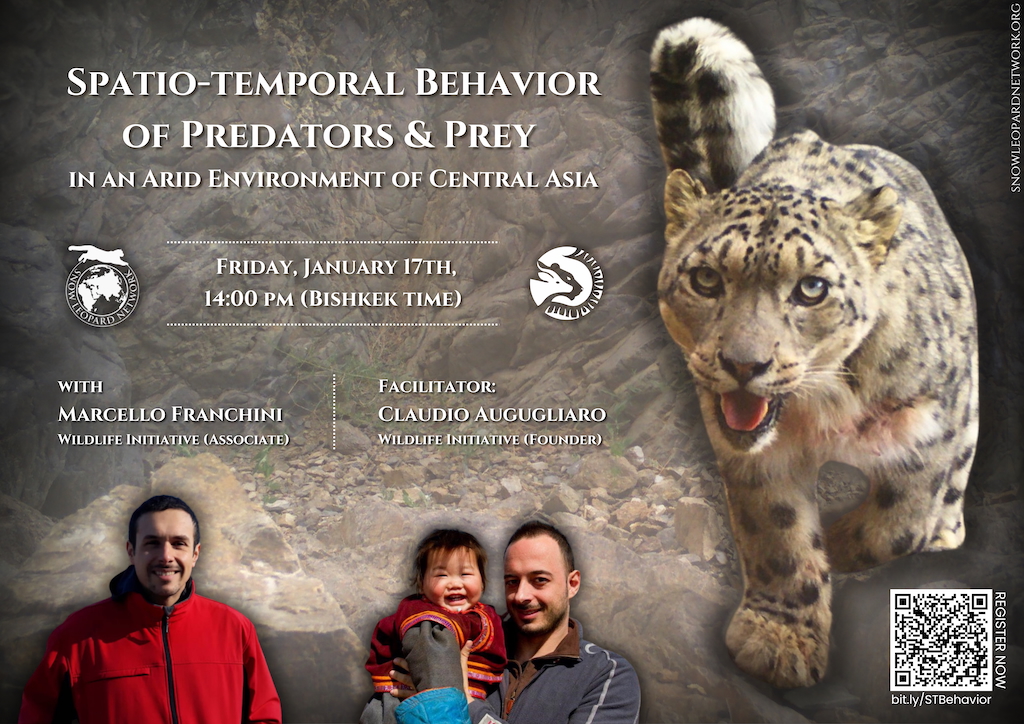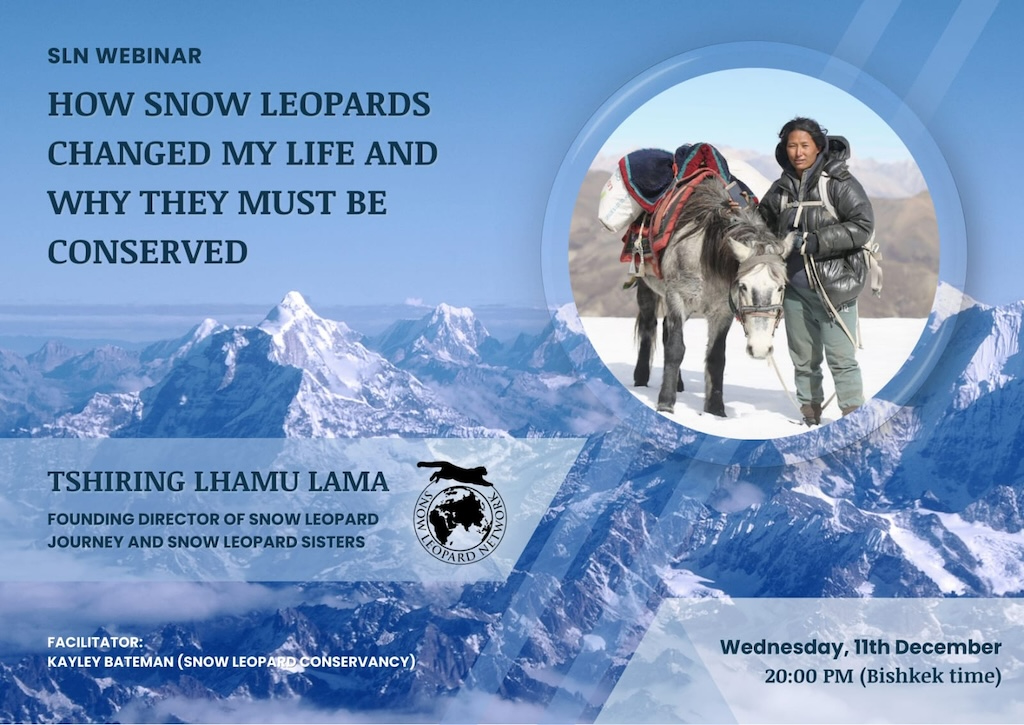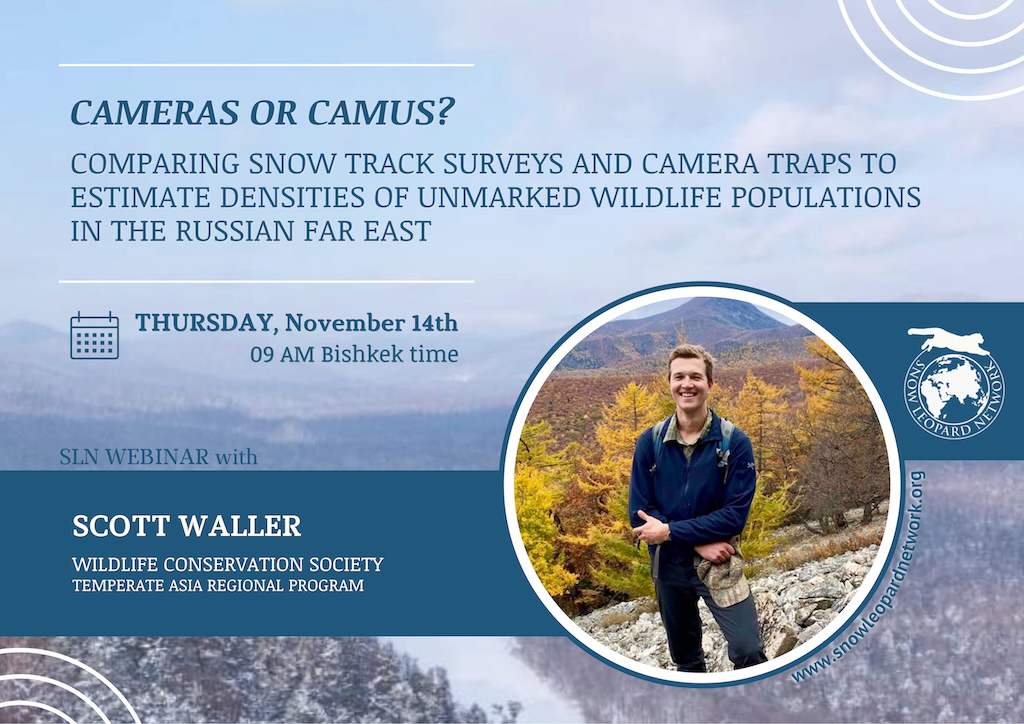We are delighted to invite you to view this special webinar presentation with Rodney Jackson and Rinzin Phunjok Lama.
In this webinar, Rodney Jackson – the first scientist to radio-collar snow leopards, will share milestones along his 45+year career dedicated to the research and conservation of this seldom seen big cat. Much of Rodney’s pioneering work was undertaken before the introduction of PC computers, hand-held GPS devices, or smart phones and without benefit of walkie-talkies or digital cameras. His study area in Western Nepal was only reachable via a 12-day or more trek over arduous, dangerous trails, with all supplies, food and equipment for the 3–6-month field session portered in by local people or more rarely on yaks. Rodney and his team rarely saw snow leopards but nevertheless were able to gather extensive information on snow leopard behavior, movements and habitat selection using telemetry and tracking social sign-posts along travel lanes favored by male and female snow leopards alike.
From this seminal study, Rodney will share his work training Protected Area rangers in Pakistan, Nepal, Bhutan and Mongolia using sign transects (SLIMS) to conducting the first camera trap and non-invasive studies, pioneering community-driven conservation and wildlife-livestock conflict mitigation to working with Traditional Cultural Elders, shamans and educators in Central Asia. Over the past few decades, he has focused on mentoring the next generation of conservationists.
Rodney and Rinzin will then discuss how studies of snow leopards and their prey have changed from the “muddy boots” days of the 1970s-1990’s to involve closer and more interactive exchanges with local communities for resolving human-wildlife conflict, address climate change and laying basic framework for empowering local people to become increasingly effective as citizen scientists and front-line guardians of the snow leopard, its mountain biodiversity and their own environment. While key questions remain, like “how many snow leopards are there?”, the need for more strategic conservation action to address many growing threats remains. Indeed, the future of snow leopards’ rests with the current generation of biologists, ecologists and social scientists — men and women working in tandem with local people (especially pastoralists and herders) and government rather than being heavily driven by academia.

